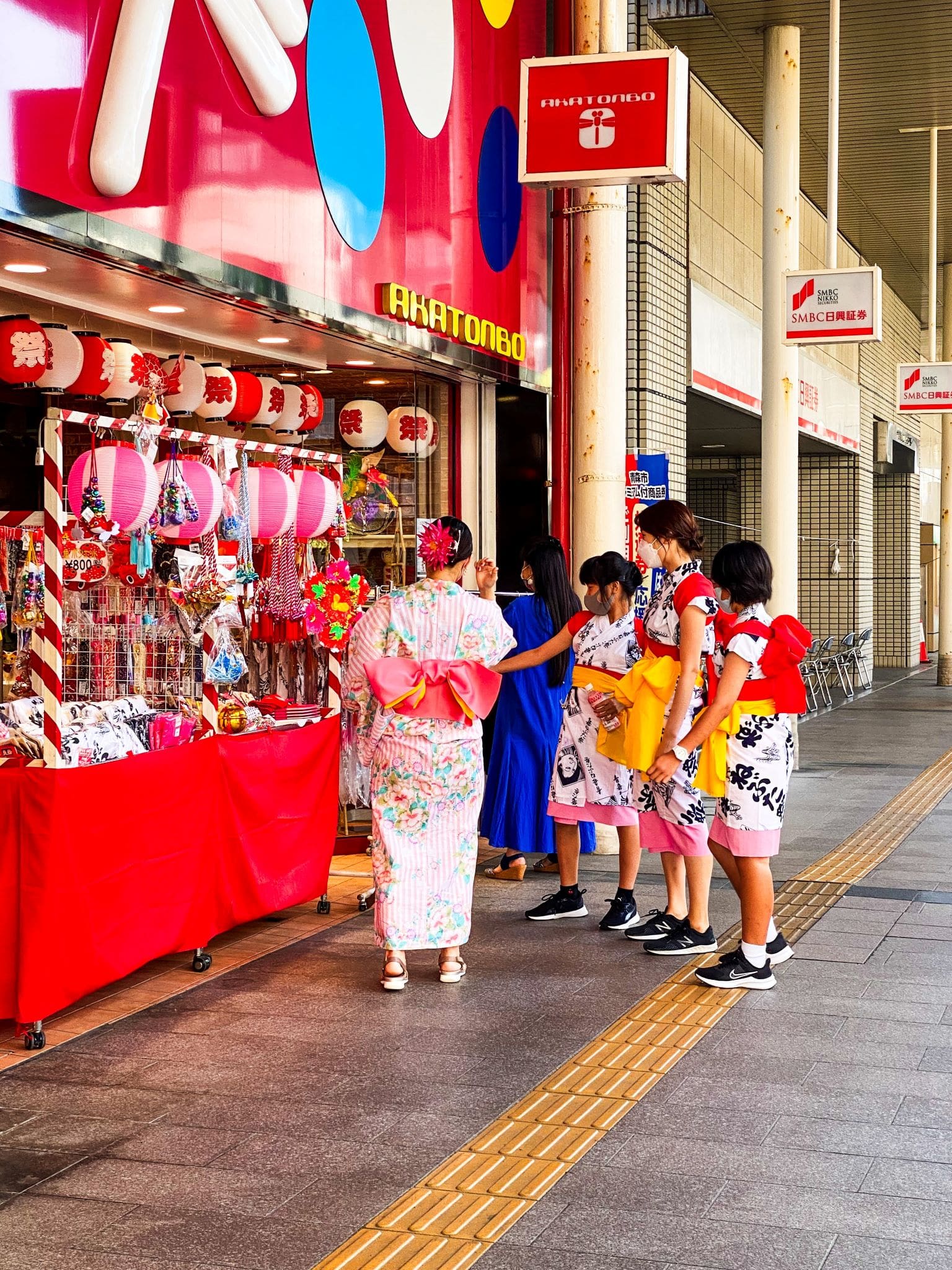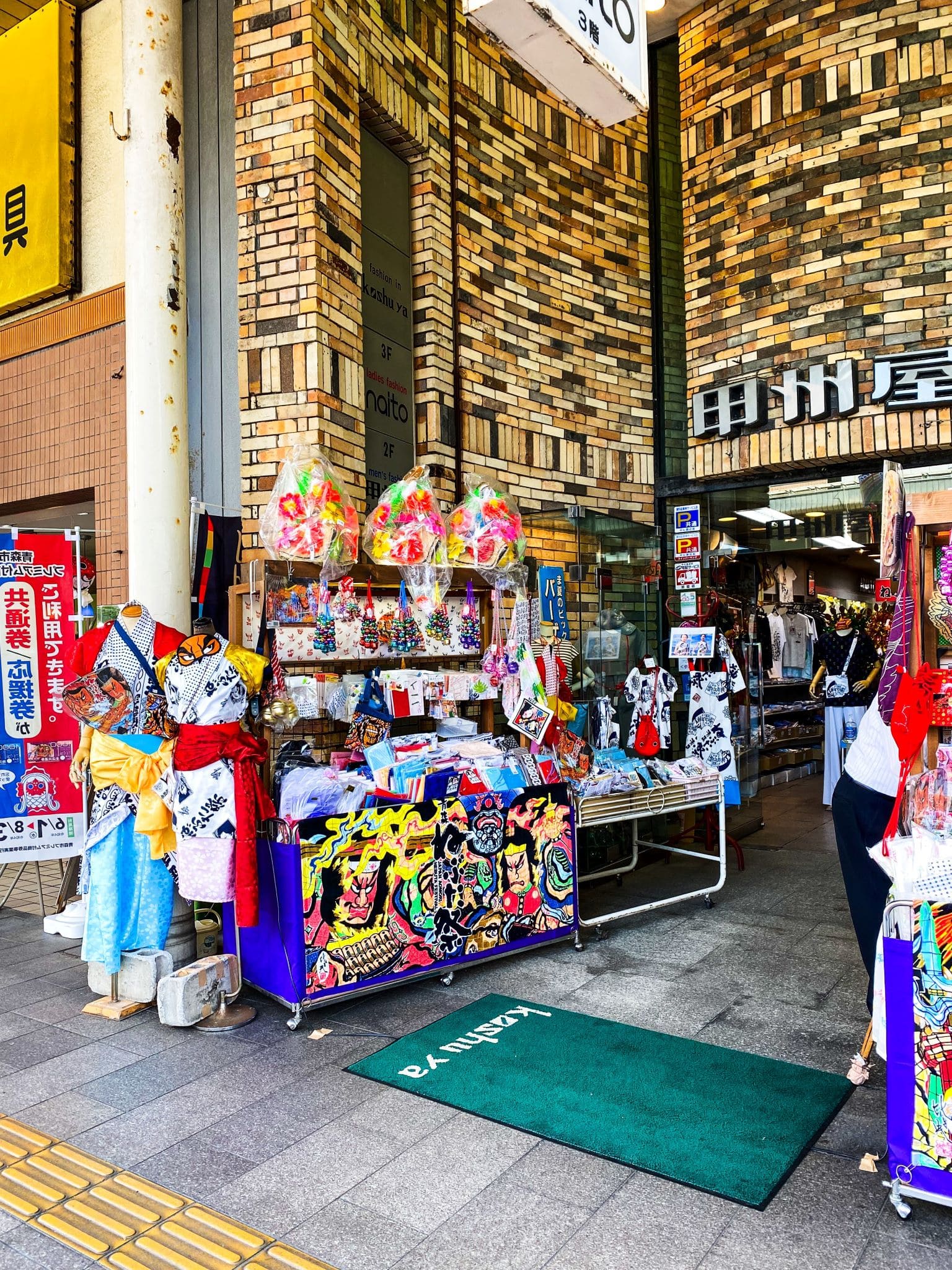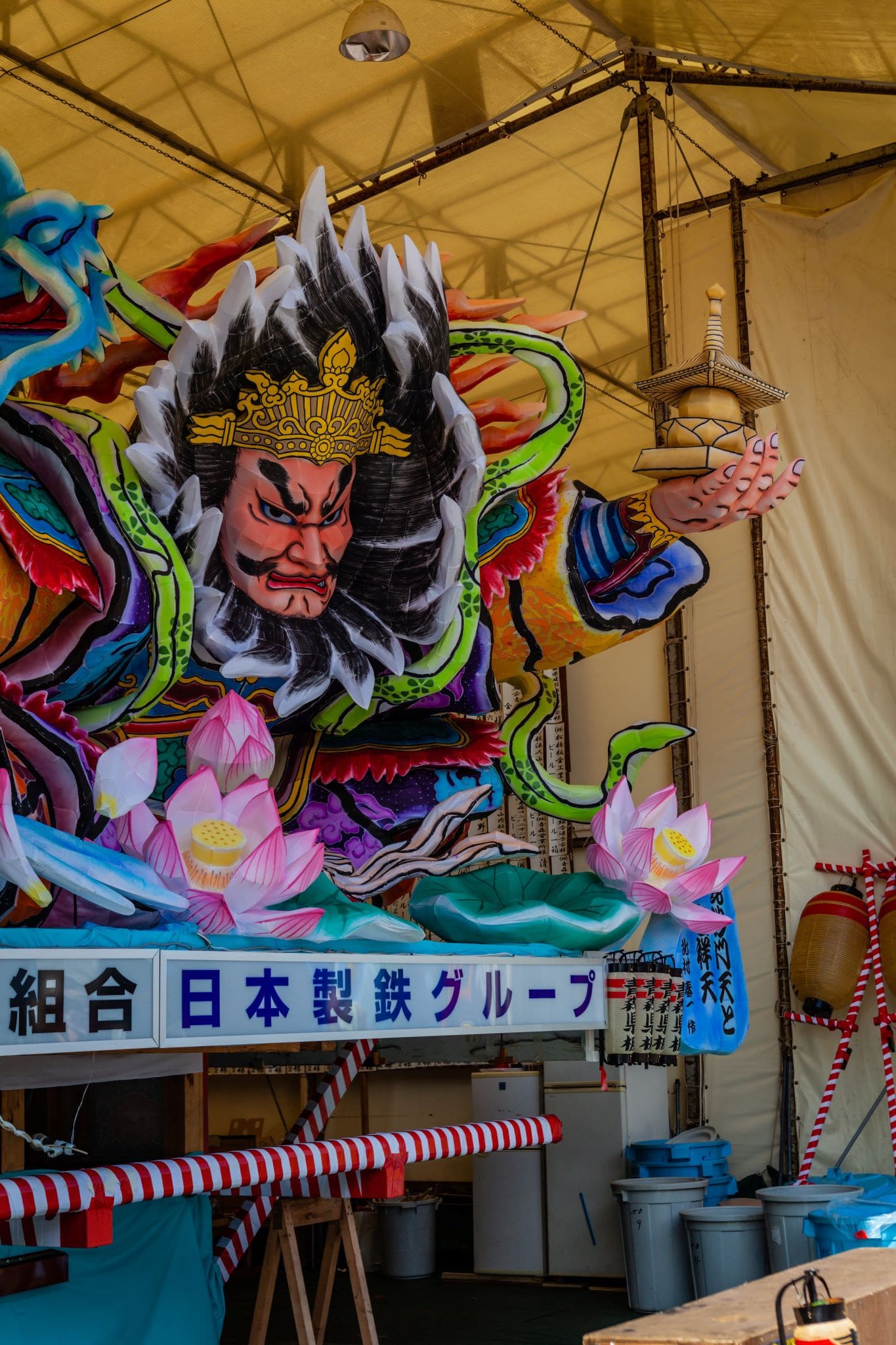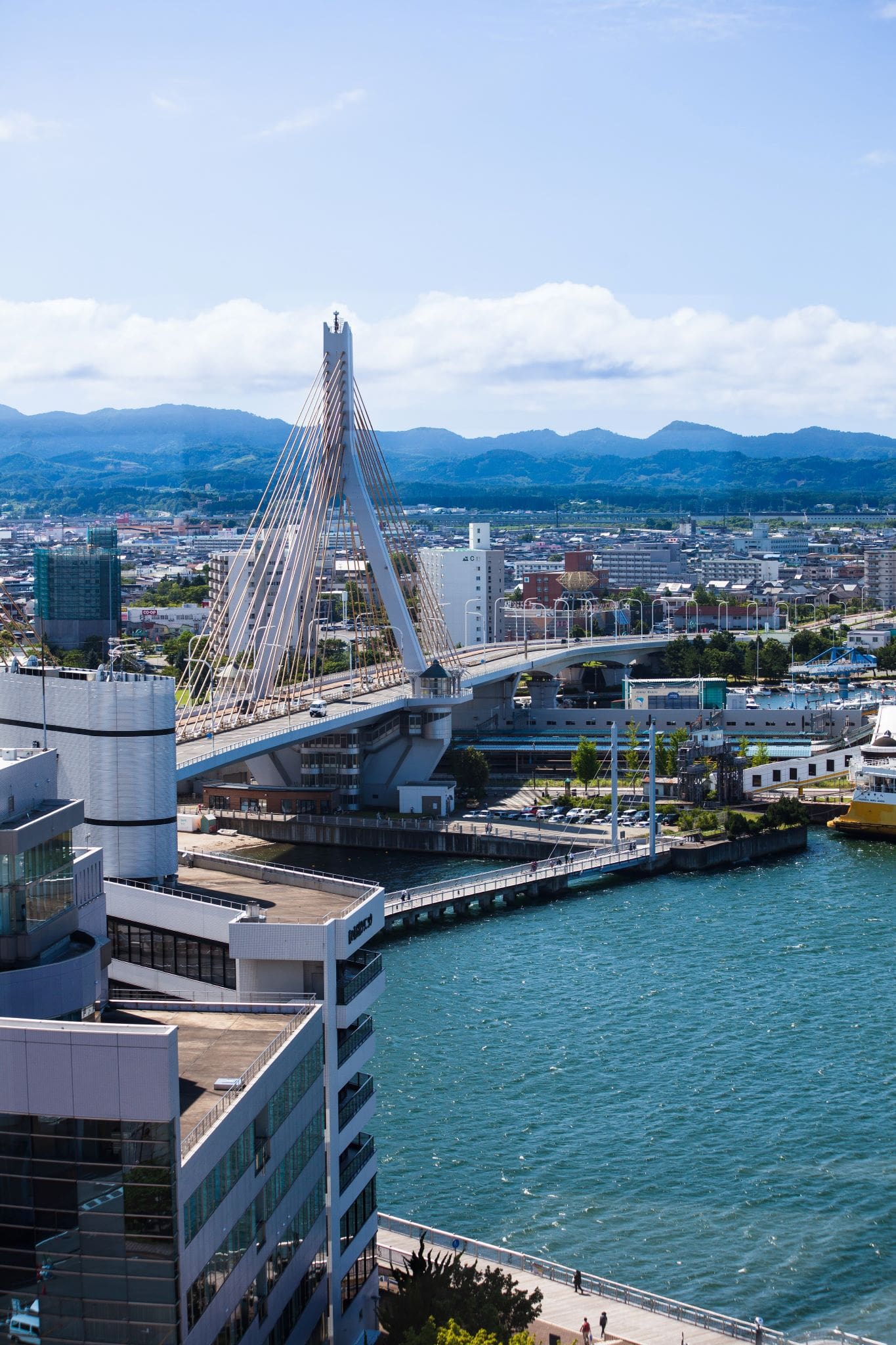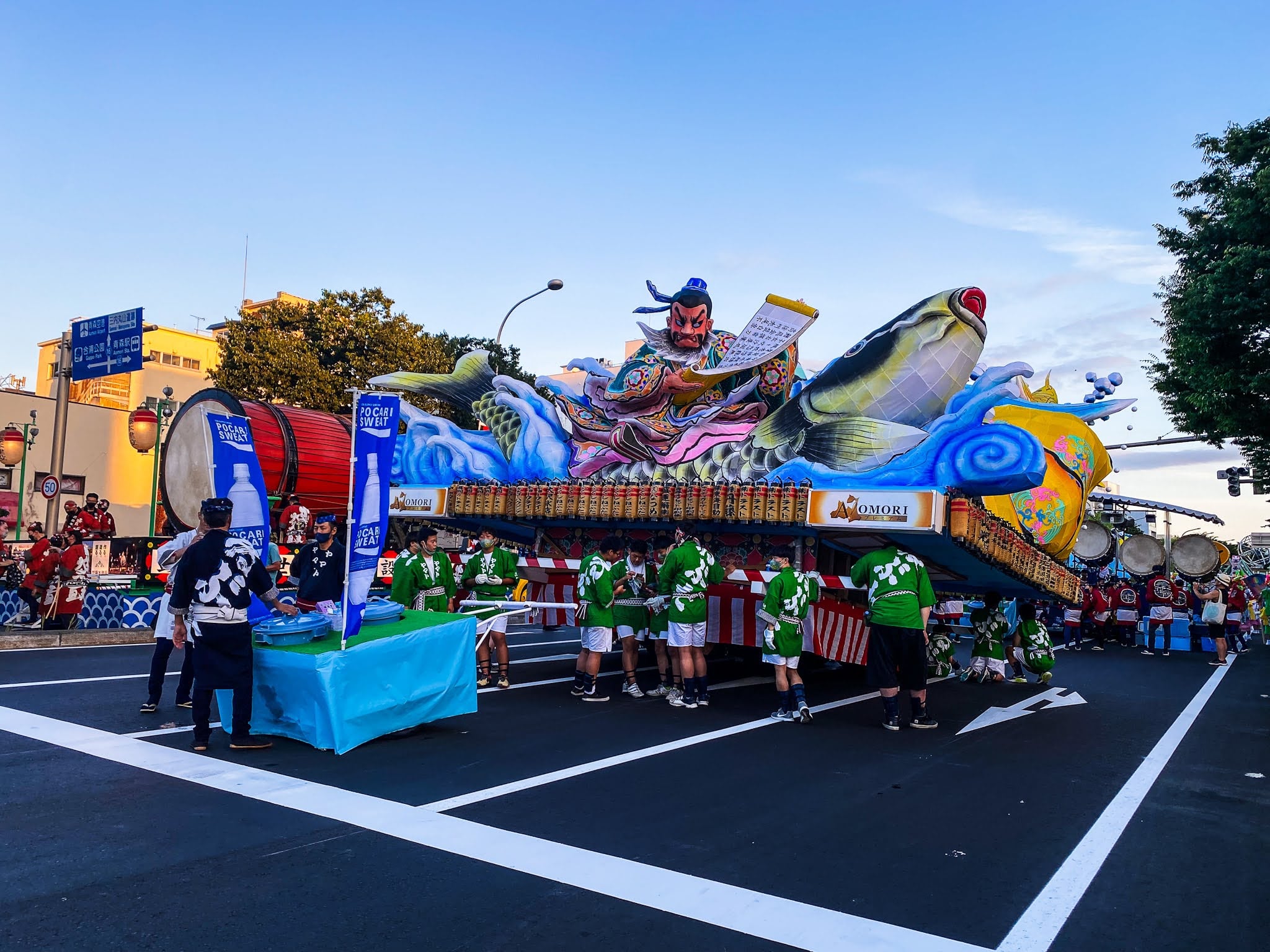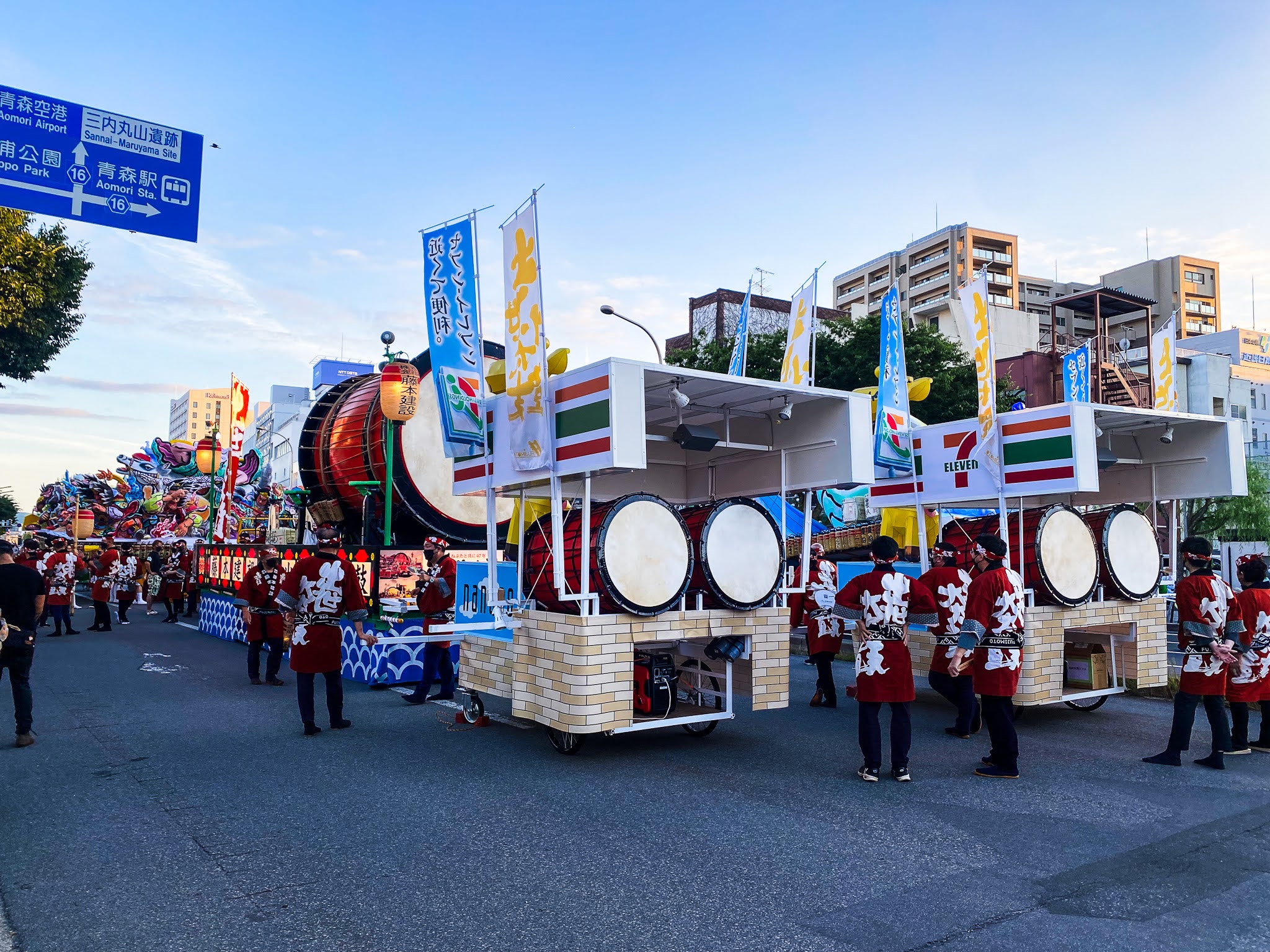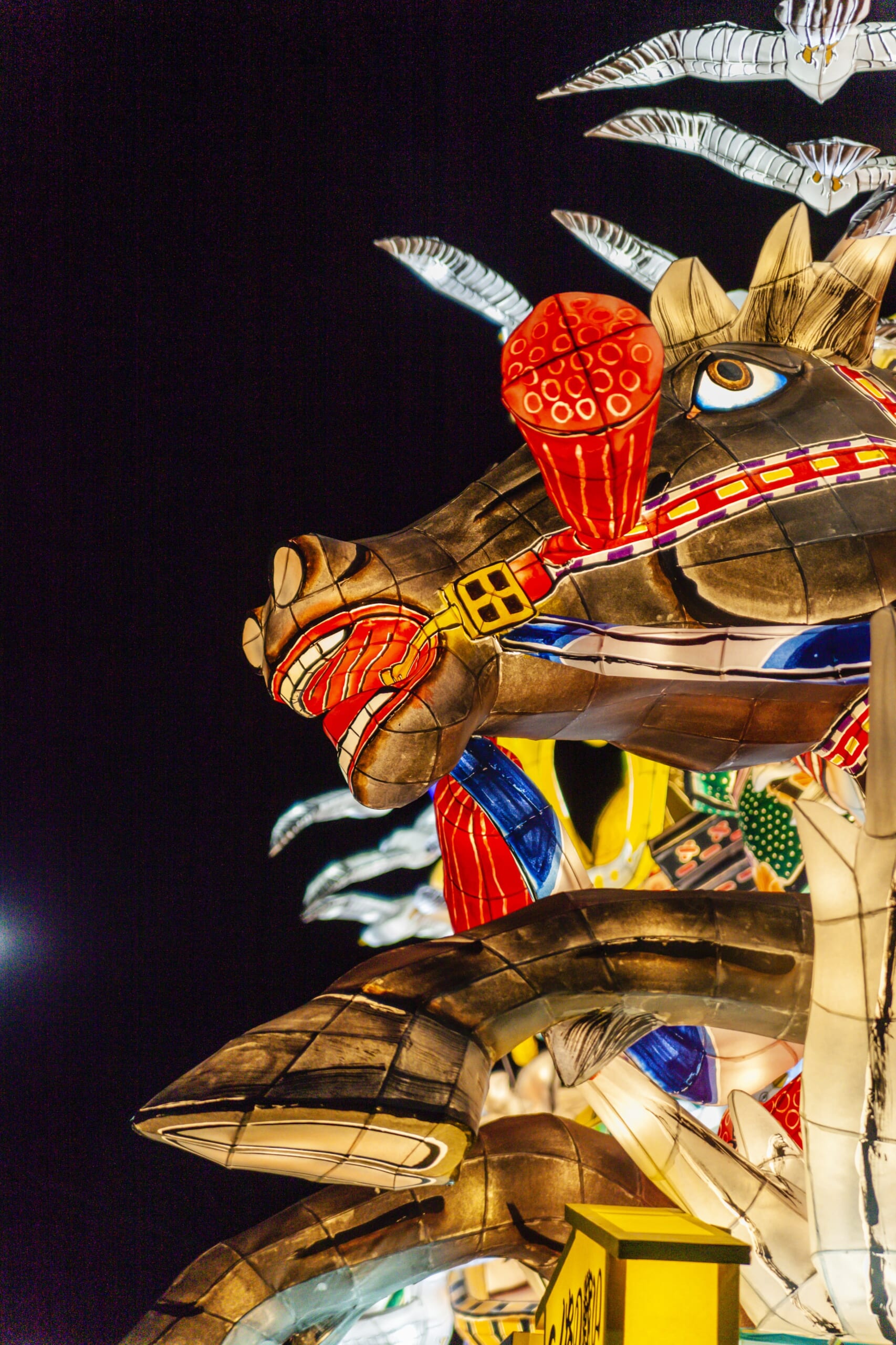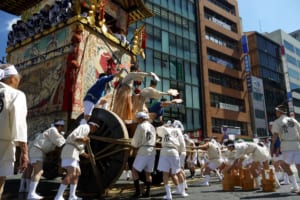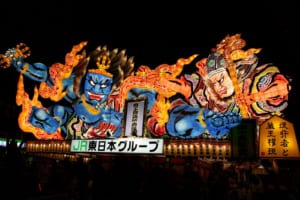Aomori Nebuta Matsuri: Tohoku’s Greatest Parade
The Night of the Dancing Giants: Guide to Aomori's Nebuta Matsuri

To dive into Aomori’s Nebuta Festival is to venture into the exciting mix of history, culture, and spirited resilience of Japan’s northern reaches. Located at the northern tip of the main island, Honshu, the quaint city of Aomori transcends into an illuminated panorama of creative vitality every summer when the Nebuta Festival, one of the greatest in the area, stirs its streets to life.
The spectacle unfolds as a mesmerizing clash of light, color, and sound, but behind the scenes, it’s a resonant testimony of a city whose heartbeats are firmly rooted in tradition. The rhythmic thump of the taiko drums, the intricate detail of each giant float, and the melodious chants of ‘Rassera, Rassera’; all celebrate the heart of Aomori’s cultural identity.
*Please note that this article contains affiliate links.
What is the Aomori Nebuta Festival?
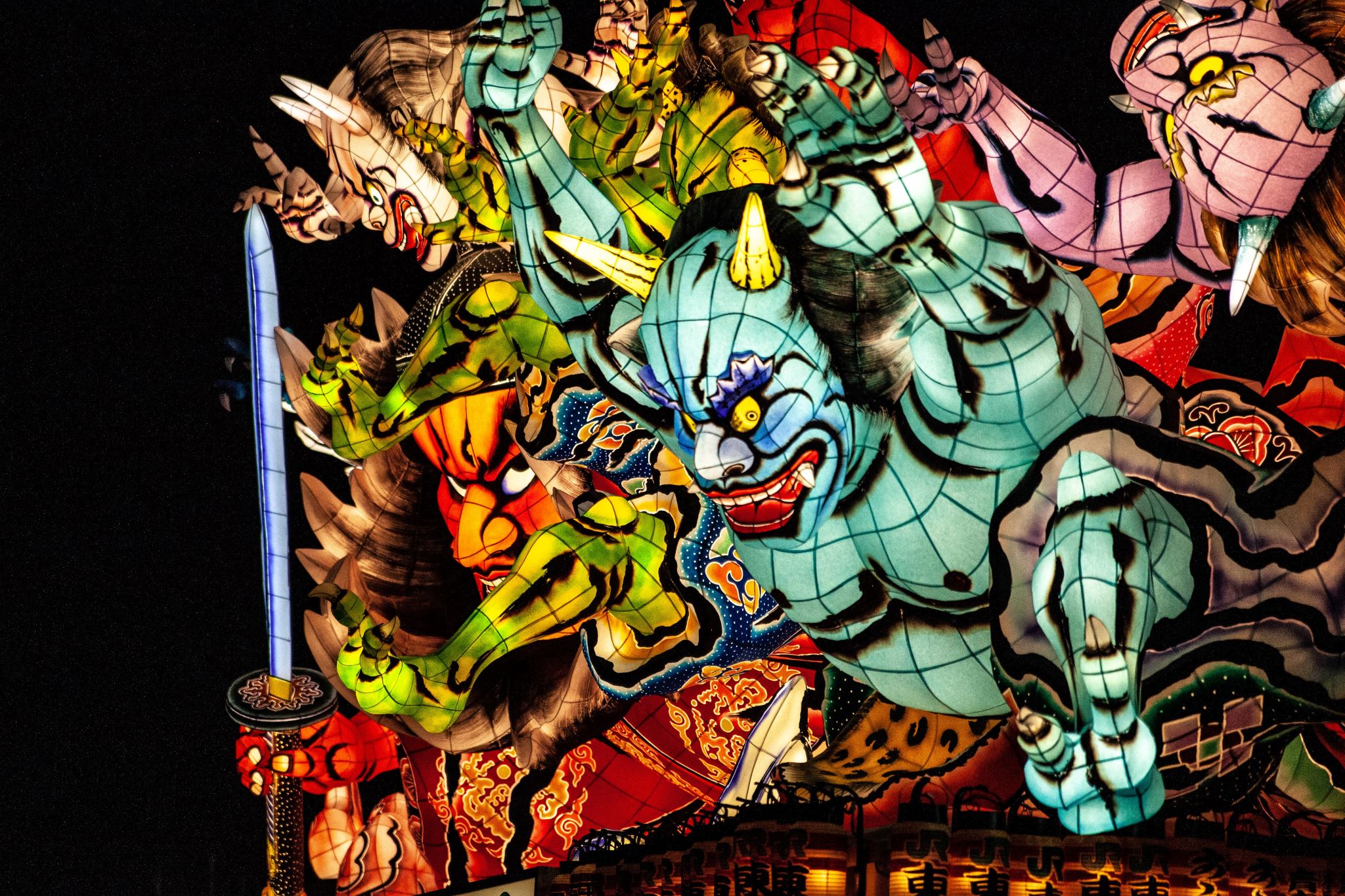 The Aomori Nebuta Festival (青森ねぶた祭り) is the main summer festival in Aomori and one of the three most prominent festivals in the Tohoku Region, renowned for its grandiose displays of illuminated floats. These nebuta – giant structures depicting historical and mythical figures – are the festival’s main attraction. Accompanied by a spirited crowd of dancers, called ‘Haneto’, the parade creates a lively atmosphere that’s hard to ignore.
The Aomori Nebuta Festival (青森ねぶた祭り) is the main summer festival in Aomori and one of the three most prominent festivals in the Tohoku Region, renowned for its grandiose displays of illuminated floats. These nebuta – giant structures depicting historical and mythical figures – are the festival’s main attraction. Accompanied by a spirited crowd of dancers, called ‘Haneto’, the parade creates a lively atmosphere that’s hard to ignore.
In short, it’s a community celebration turned all-out street party.
As for its origins, the festival is believed to date back to the Heian period (794-1185). It’s said that the nebuta floats evolved from a practice of floating lanterns down a river to guide the spirits of fallen warriors, a ritual known as toro nagashi, during the festivities of the Tanabata Festival. This was later adopted by samurai, who used the large lanterns to cast intimidating shadows on the enemy, making their forces appear more substantial.
Over the centuries, as this Tanabata spin-off started to mingle with regional folklore, the ritual morphed into today’s Nebuta Festival. However, like many ancient traditions, the exact origins are still a bit hazy. This mix of mystery and community spirit adds an extra dash of charm to the Nebuta Festival.
▶ Aomori Nebuta Festival official website: https://www.nebuta.jp/foreign/english.html
How (not) to plan for the Nebuta Festival
Fast-forward to the bustling streets of August 2022. As I settled into my seat on the bullet train from Tokyo to Aomori, a bundle of nervous excitement churned inside me. After years of anticipation and a pandemic-induced delay, the prospect of finally experiencing the Nebuta Festival was so near I could taste it. The anticipation was seasoned with a pinch of anxiety though, considering my lodging situation.
You see, in my eagerness to be part of this cultural spectacle, I had somewhat underestimated the popularity of the festival, or overestimated the capacity of Aomori’s hotels. The result? A month before the festival, the city was as fully booked as a bestselling author at a literature festival. Every inn, every hotel, every conceivable accommodation was snapped up quicker than the blink of an eye.
Another friend and photographer had plans to go during the weekend and the closest room available was in the city of Morioka in Iwate Prefecture, about 170Km south of Aomori. But I knew I didn’t want the hassle of sleeping so far away. Train schedules become more limited as you venture away from large metropolitan areas, and for a festival that takes place mostly after dusk, I couldn’t afford being forced to take an early evening train to go back to my accommodation.
Yet, there was no deterring me. I was more determined than a sumo wrestler on a diet, so off to Aomori I went, my trusty camera and backpack in tow and not a hotel reservation in sight. Thanks to a stroke of luck, at the last minute I managed to crash at a convenient manga-internet cafe from a large chain I happened to spot. They had a few private rooms available, which was quite the godsend, considering my rather audacious travel plan.
The allure of the Nebuta Festival, the joy of participating in a cultural phenomenon so deeply significant, it was all worth it, even if it meant stepping into the shoes of an impromptu adventurer. After all, isn’t that the very essence of the travel experience?
▽Thinking of going to Aomori?▽
Get your JR East Pass Tohoku here!
Making the best of the daytime in Aomori before the festival
I made sure to study the festival layout during the previous night to ensure a good vantage point for the ensuing spectacle. Maps are available at Aomori Station, and also on the festival’s official website. As the festivities all take place towards the evening, if I woke up early enough I would have time to explore the city before scouting the streets where the parade was expected to pass.
After the dawn had broken and the city began to wake from its slumber, I started my day, armed with my camera, notebook, and an unyielding spirit of exploration. The city buzzed with a palpable sense of excitement, the infectious anticipation of the grand spectacle that was to follow later in the day. For now, though, it was time to absorb the cultural richness that lay in the heart of Aomori.
More info: 10 Best Things to Do in Aomori
The Nebuta Museum
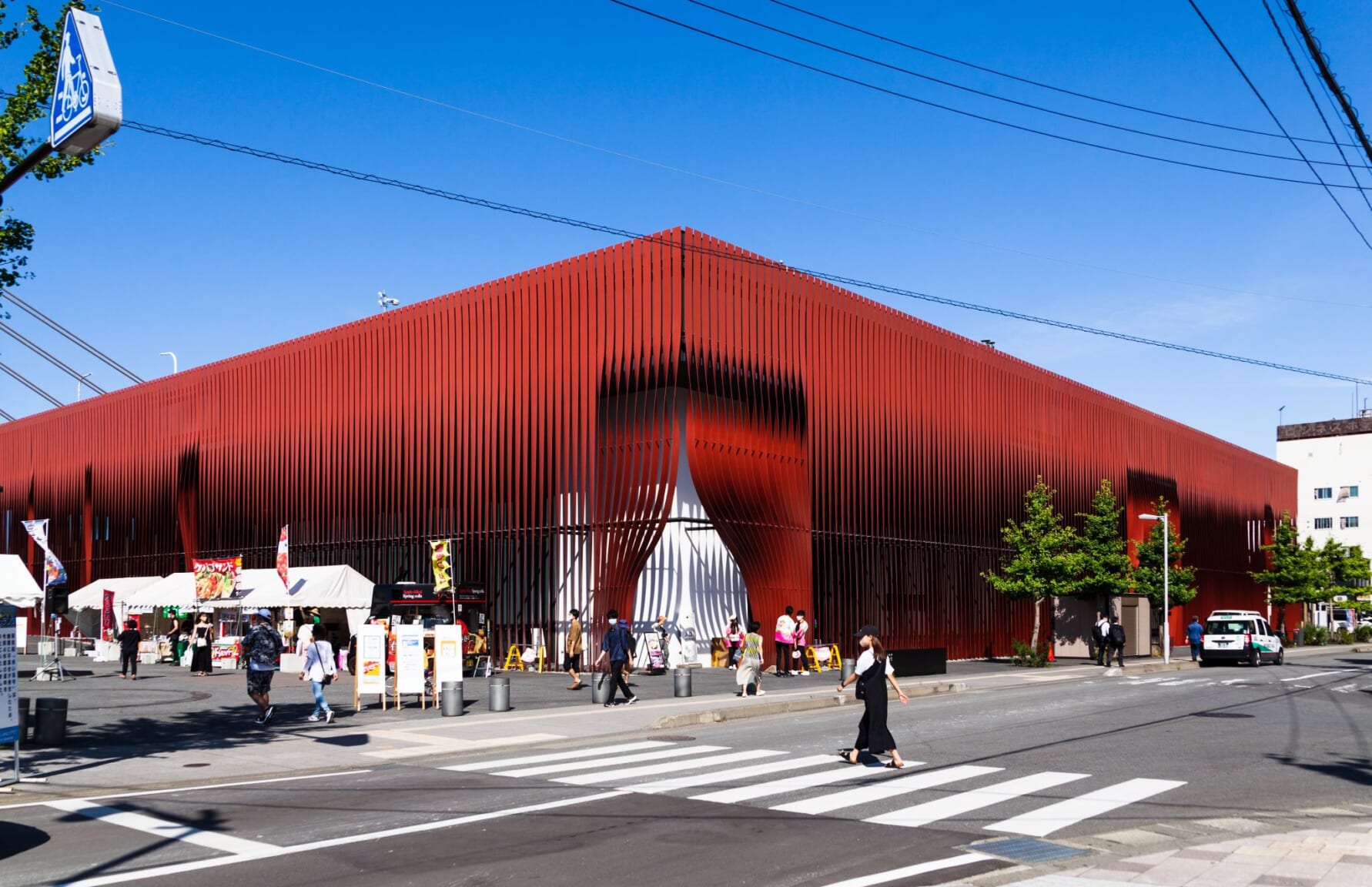 My first stop was the Nebuta Museum WA RASSE (ねぶたの家 ワ・ラッセ), the institution dedicated to celebrating the art and history of the festival. If Aomori City was the stage, WA RASSE was the backstage – the behind-the-scenes access to the magic that is the Nebuta Festival. The museum unfolded as an interesting blend of historical insights, technical wizardry, and a trove of award-winning nebuta floats from years gone by.
My first stop was the Nebuta Museum WA RASSE (ねぶたの家 ワ・ラッセ), the institution dedicated to celebrating the art and history of the festival. If Aomori City was the stage, WA RASSE was the backstage – the behind-the-scenes access to the magic that is the Nebuta Festival. The museum unfolded as an interesting blend of historical insights, technical wizardry, and a trove of award-winning nebuta floats from years gone by.
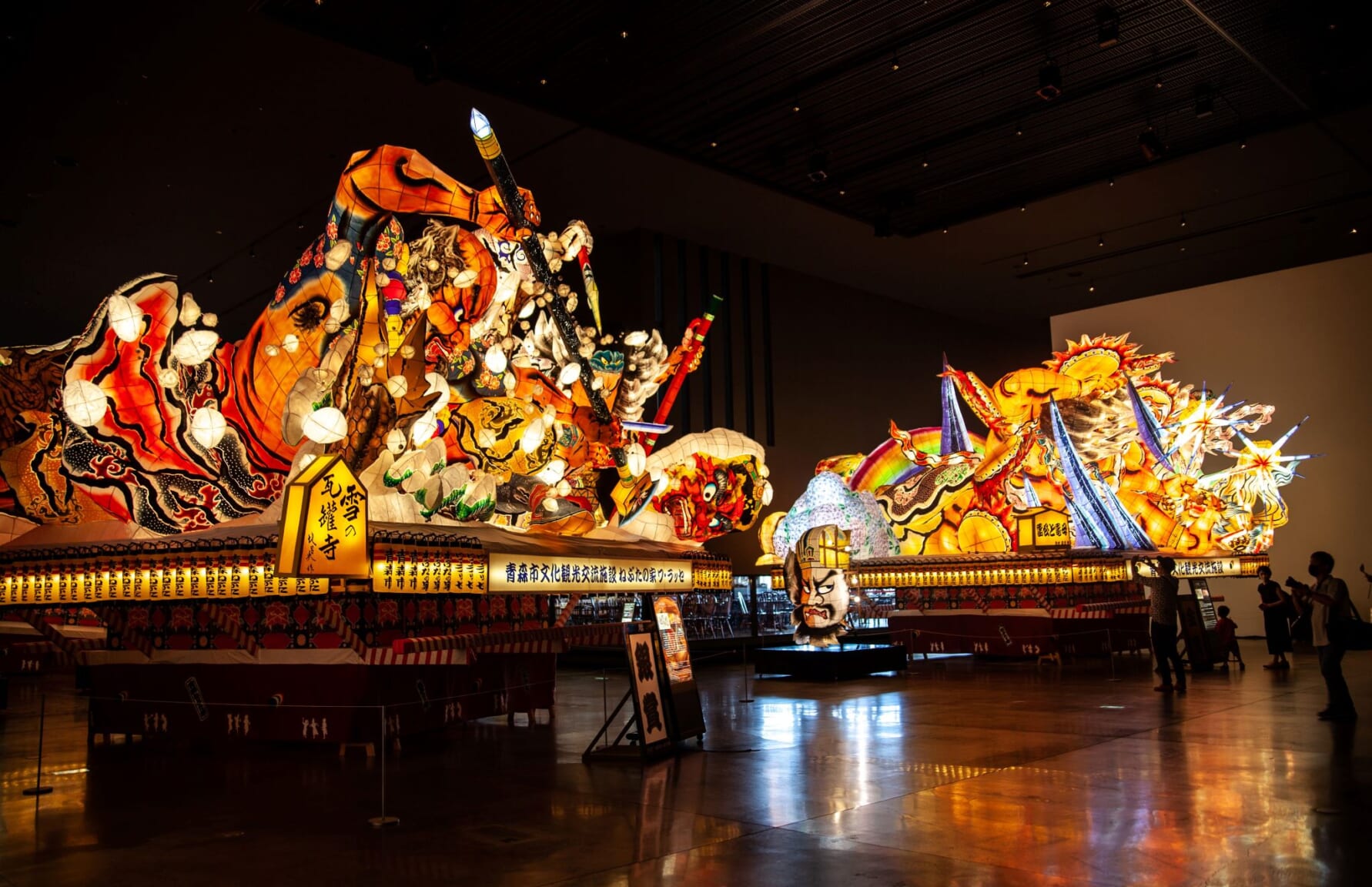
As I strolled through the museum, I learned the labor of love that goes into the creation of each nebuta float. The intricate detailing, the vivid hues, the grandiose dimensions; each element spoke volumes about the dedication and mastery of the artisans. It was like stepping into an artist’s sanctum, a chance to appreciate the strokes of genius that are usually veiled behind the shimmering spectacle of the festival.
Information
 Access Access |
1-min walk from Aomori Station |
|---|---|
 Official Website Official Website |
https://www.nebuta.jp/warasse/foreign/english.html |
Aomori’s Own Unique Ramen
Taking a break from the culture overdose, I found myself in a quaint little shop near the museum called Ramen Ajino-Sapporo (味の札幌 浅利), famed for its invention – the miso curry milk ramen. Now, the prospect of curry, milk, and ramen all in one bowl may seem unusual, but trust me when I say it was totally worth trying.
 Garnished with bamboo shoots, seaweed, tender chashū pork, bean sprouts, and a dollop of butter, the soup was a shade creamier than regular miso ramen. Aomori, it seemed, knew a thing or two about surprises, not just in their festivals, but in their cuisine too.
Garnished with bamboo shoots, seaweed, tender chashū pork, bean sprouts, and a dollop of butter, the soup was a shade creamier than regular miso ramen. Aomori, it seemed, knew a thing or two about surprises, not just in their festivals, but in their cuisine too.
Information
 Access Access |
5-min walk from Aomori Station |
|---|
Getting Ready
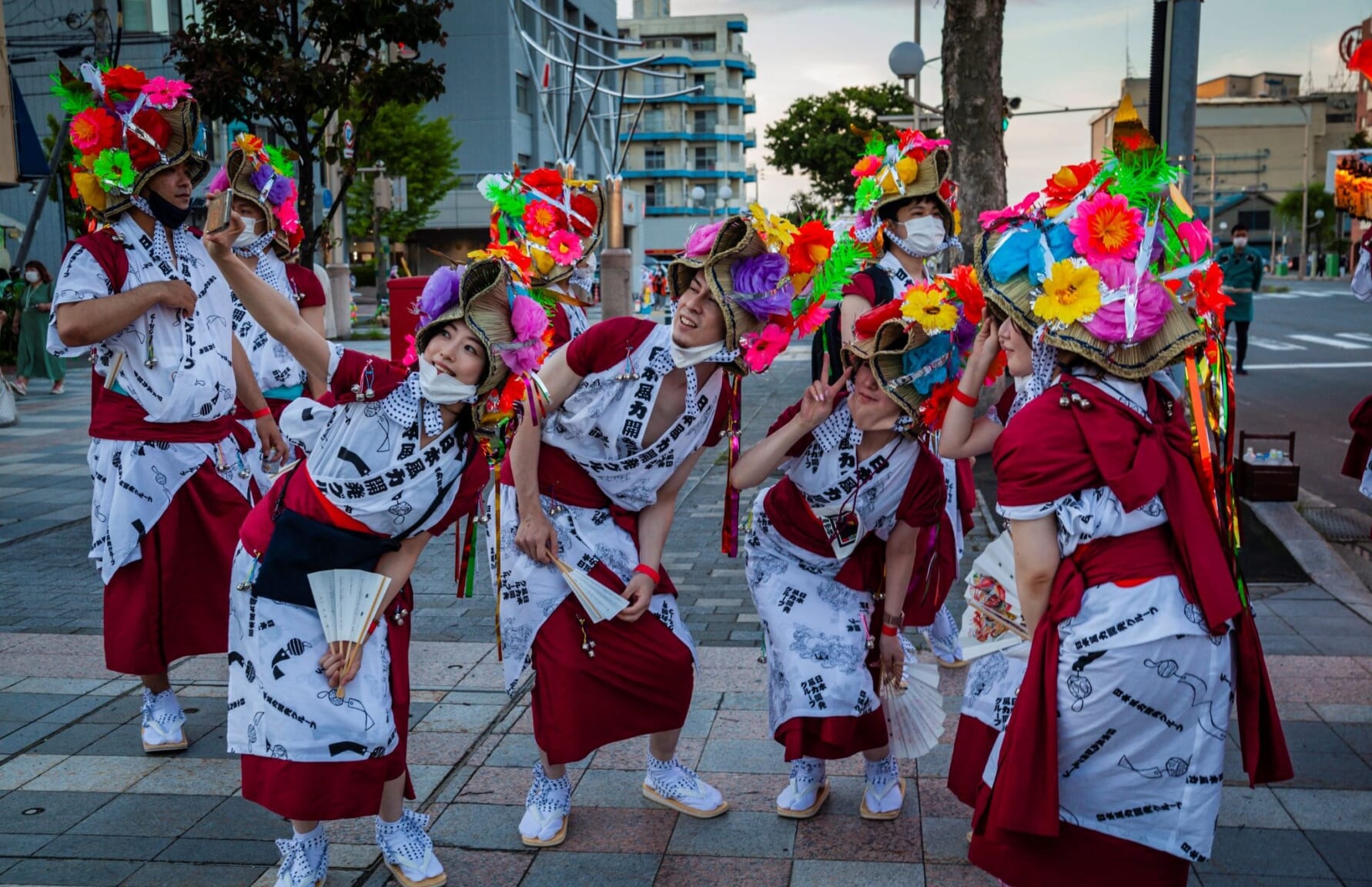
Lunch done, it was time to wander the streets again, where I saw an assortment of shops with costumes on display. Now, this wasn’t your ordinary dress-up; these were Haneto costumes, the traditional attire of the Nebuta Festival dancers. Sporting a yukata (summer kimono), a hanagasa (straw hat) adorned with colorful flowers, and a pair of tabi (split-toe socks) to match, anyone who dons this attire can become a part of the spectacle. There’s something truly communal about a festival where the boundary between spectator and performer blurs to insignificance.
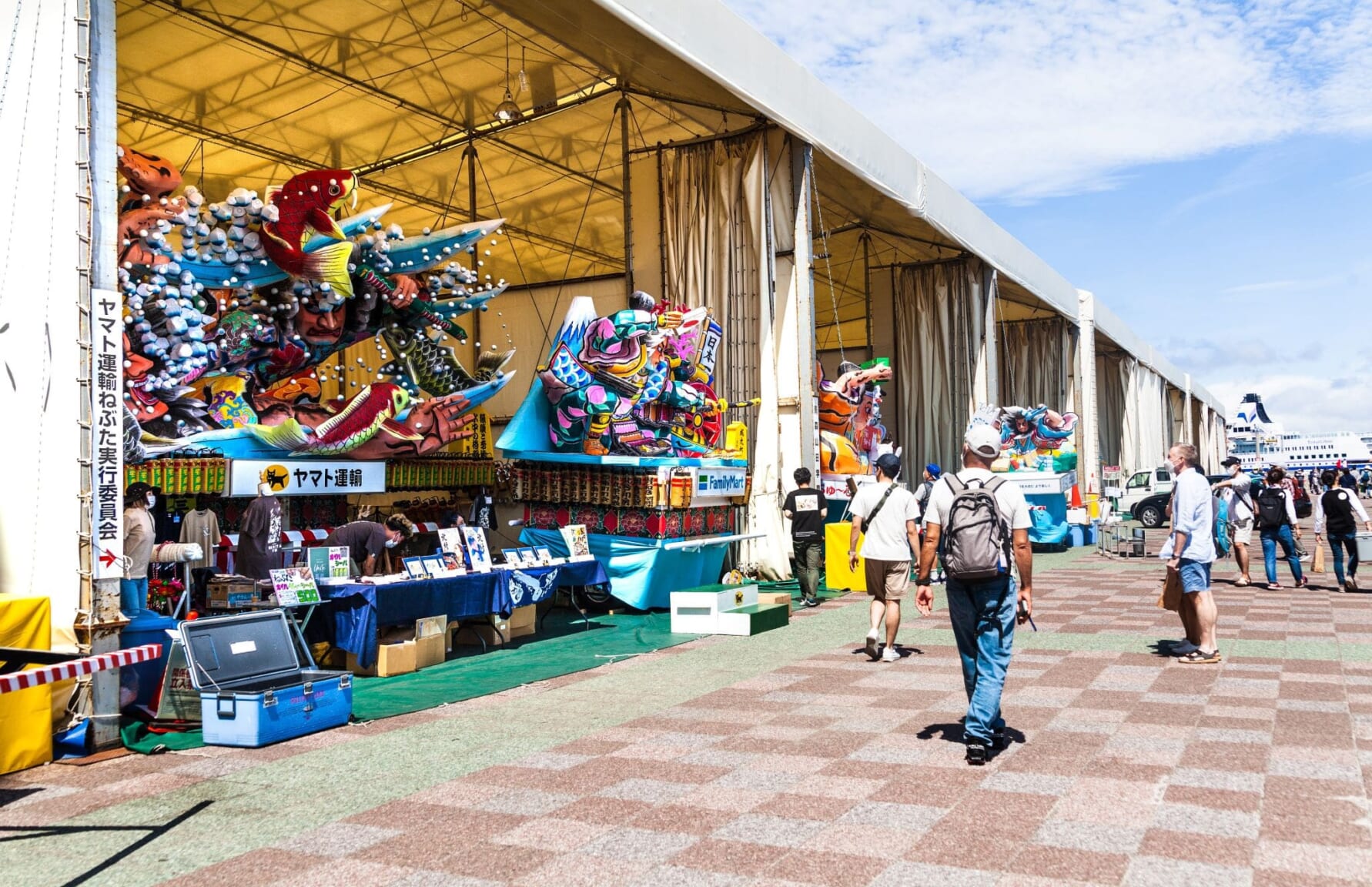
While mapping out the parade route, I chanced upon a huddle of excitement around the Aomori Prefecture Tourism Information Center. Turns out, it was a pit-stop for the grand Nebuta floats, where they remain stored while the festival is being carried out, being prepared and receiving last-minute touch-ups before taking center stage. The sight was reminiscent of the Nebuta Museum, only this time it felt more real, more immediate. After all, the warriors were about to march to their battle tunes.
The Center, too, was worth a visit. Its top floor provided a sweeping view of the city and the harbor – a feast for the eyes and the camera. Meanwhile, its ground floor was a treasure trove of souvenirs and local specialties, promising mementos of a trip that was turning out to be nothing short of extraordinary.
Information
 Access Access |
8-min walk from Aomori Station |
|---|---|
 Official Website Official Website |
https://www.aomori-kanko.or.jp/aspam/ |
Time for the Parade

As the afternoon wore on, the city was slowly swallowed by the festival fervor. The streets near Aomori Station, the battleground of the looming parade, were gradually sealed off. Foldable seats, going at 3,000-4,000 yen a pop, started popping up like mushrooms after rain. Sections of the main avenue began to look like campsites, with people squatting or leaving their belongings to secure prime viewing spots. Technically, this was against the rules, but with all hands on deck to manage the growing excitement, it was a minor breach nobody at the festival staff seemed to mind.
Street vendors were gearing up for the event, their stalls overflowing with food and drinks, while bars took their business onto the sidewalks. In this brewing cauldron of festivity, I managed to score a brilliant vantage point at the intersection of Yanagi-Machi Dori and Teramachi Dori (note that parade routes are not always the same, so this exact place may not be as good in future editions. Always make sure to check the official information).

As dusk fell, the Nebuta floats, hitherto static giants, sprung to life, their inner lights illuminating the gathering darkness. Dozens of participants strained and sweated below each float, pushing and steering them with practiced finesse. Following the last float’s departure from the starting line, I meandered along the parade route, immersing myself in the pulsating energy of the night.
The floats would occasionally charge toward the special seating sections or spin around in a thrilling spectacle. The crowd’s energy never dwindled, fueled by the anticipation of seeing their favorite float crowned as the champion. All in all, the entire night parade lasted around 3-4 hours.
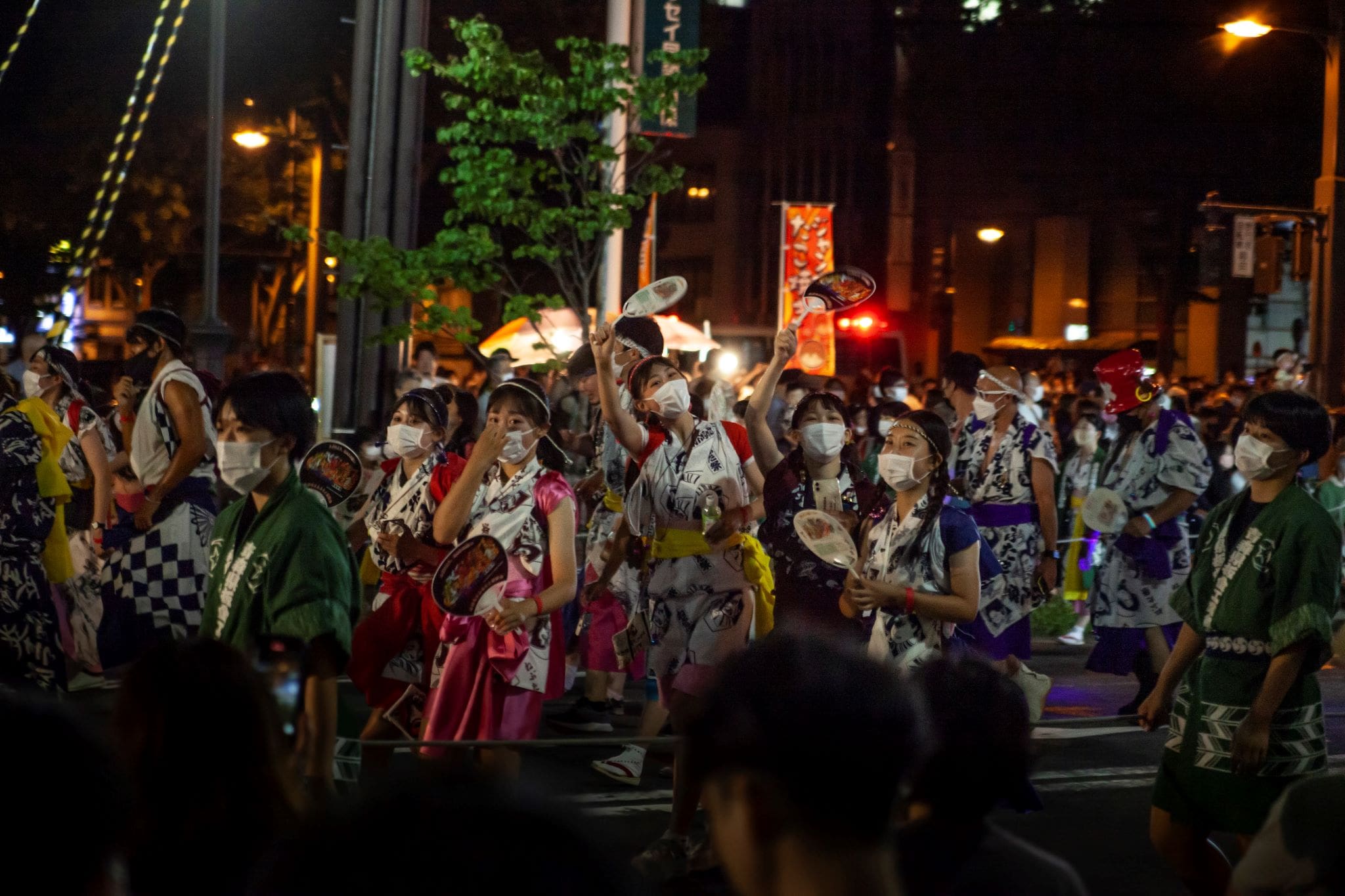 As the festivities wound down, I found myself back at the manga cafe, praying for another stroke of luck. They didn’t take reservations, so it was down to chance whether I’d find a vacant room once again. But lady luck was on my side again, and I was able to get another private room for the night.
As the festivities wound down, I found myself back at the manga cafe, praying for another stroke of luck. They didn’t take reservations, so it was down to chance whether I’d find a vacant room once again. But lady luck was on my side again, and I was able to get another private room for the night.
The day had been a roller coaster ride, and as I settled into my room, I felt like I had truly experienced the soul of Aomori – its people, its culture, and its spirited Nebuta Festival. However, I didn’t stay for the grand finale which was supposed to take place on the weekend – the iconic sea procession of the winning Nebuta under a sky lit by fireworks.
I’d heard rumors of the weekend crowds, of photography wars waged for the best viewing spots. A friend and fellow photographer confirmed the chaos. The weekend turned the city into a vast sea of people, making any movement an exercise in patience. So, I was somewhat relieved to have experienced the festival on a weekday – the first since the pandemic.
Getting to Aomori
From Tokyo, Aomori is reachable by air in about 80-min from Haneda Airport to Aomori Airport, and by train with the Hayabusa on the JR Tohoku Shinkansen from Tokyo Station to Shin-Aomori Station in about 3h30m. Then it’s just one local train stop to Aomori Station. There’s also the option of riding an overnight bus from Tokyo to Aomori, which takes around 11 hours.
▽Subscribe to our free news magazine!▽
To find out more about travels and festivals around Japan, check the following links!
▽Related Articles▽
▼ Editor’s Picks ▼
Written by
Photographer, journalist, and avid urban cyclist, making sense of Japan since 2017. I was born in Caracas and lived for 14 years in Barcelona before moving to Tokyo. Currently working towards my goal of visiting every prefecture in Japan, I hope to share with readers the everlasting joy of discovery and the neverending urge to keep exploring.







